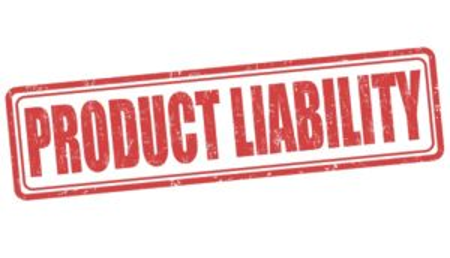The law of products liability offers special theories of recovery for injured parties, thus enhancing their ability to receive damages in the case of injury caused by a dangerous or defective product. Products liability plaintiffs in Pennsylvania may recover against a manufacturer or seller based on one or more of the following theories: strict liability, negligence or breach of warranty. Do you have a products liability case? The following are five important considerations in determining whether an individual has a products liability case:
*Did an injury occur?
This is basic but important. This consideration correlates to the consideration of whether damages are present and sufficient. While there may have been some unusual event related to the product, was there, in fact, an injury?
*Did an injury occur as the result of the use of a product?
Once a party has established that an injury has taken place, the injury must have occurred in the course of using a tangible item or goods, i.e., a product. Note that under this definition, a purchased “service” is generally not a product.
Examples of products that may give rise to a products liability case:
- Contaminated food typically caused by unsafe food handling;
- Exploding e-cigarettes, laptops, and batteries
- Children’s car seats
- Toys that are unsafe because of material contents (such as lead) and parts that cause choking or asphyxiation)
- Shredding tires
- SUV rollovers
- Brake failures
- Automobile air bag failures
- Defective gas tanks
- Prescription drugs such as Accutane, Arcoxia, Bextra, Celebrex, Lipitor, Meridia, Mobic, and Vioxx
*Was the product unsafe for its intended or expected use?
It must be determined whether the product failed to include any precautionary device such as a protective guard or pressure release valve that would have made it safe for its intended or expected use. If a consumer is using the product in some unexpected way and thus misusing it, this would likely preclude a cause of action under products liability.
*At the time of the event that caused the alleged injury, was the product in substantially the same condition or materially altered from the time of its sale or manufacture?
If the product was altered and, as a result of this change, an injury occurred, any recovery in a products liability case would be unlikely. Removing a protective guard from a saw or machine prior to the occurrence of an injury is an example of a substantial change or material alteration.
*Is the case economically viable? Does the injured party have sufficient “damages” to make the case worth the money, time, and effort to pursue the case?
Products liability cases may exhaust substantial economic resources and take a long time to litigate and settle. These cases typically require expert witnesses to examine the product and determine if it is truly defective. Therefore, it is important that a plaintiff have sufficient damages to make the pursuit of a claim worthwhile.

